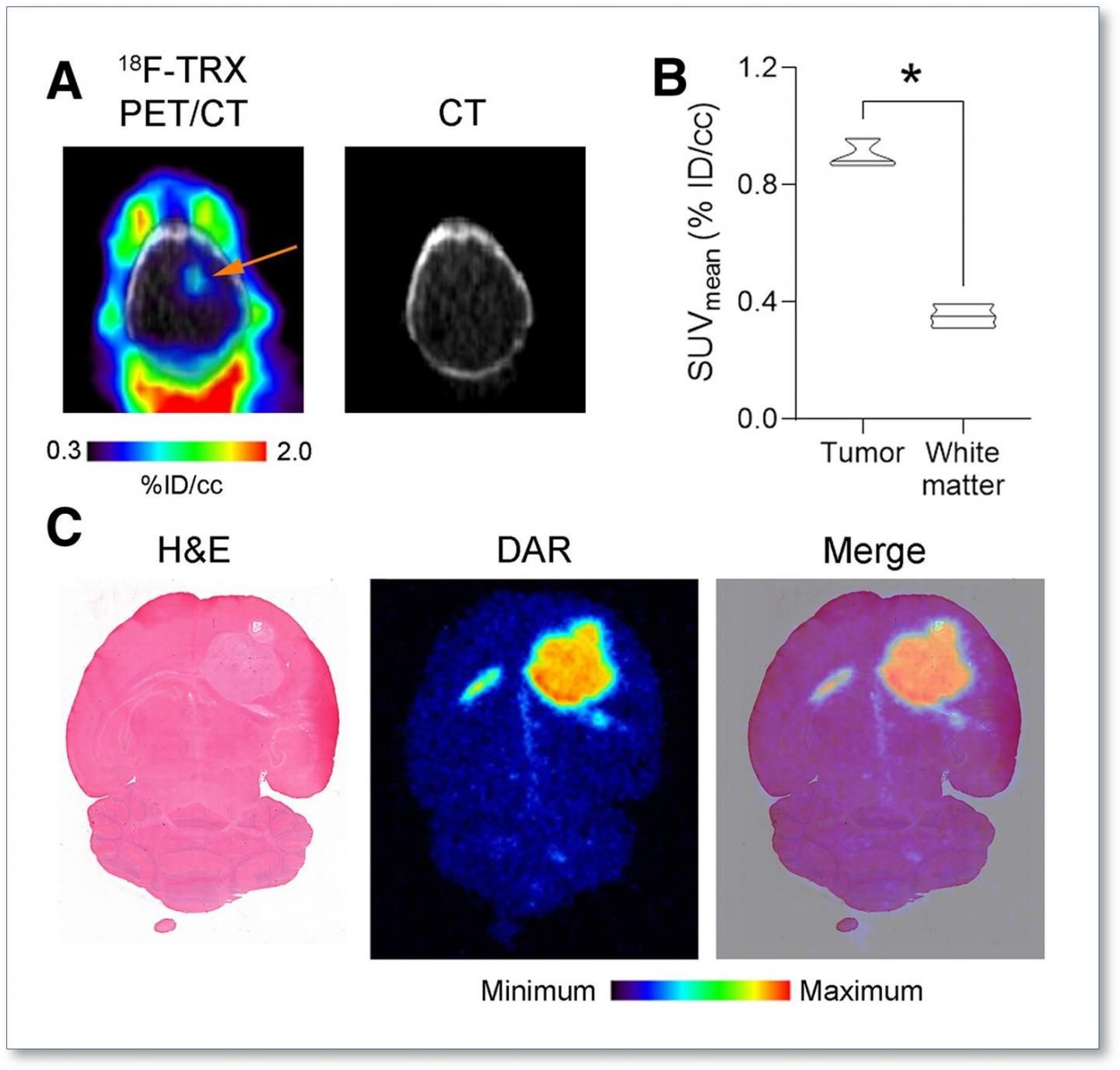New Radiotracer Identifies Iron Levels in Tumors
Measurements can help predict which tumors will respond to targeted therapies.
A new radiotracer can measure a tumor’s iron concentration, paving the way for iron-targeted treatments for cancer patients.
In a study published in the July issue of the Journal of Nuclear Medicine, a team of investigators revealed that the radiotracer 18F-TRX can accurately measure the iron concentration in a tumor with a dose similar to other 18F-based radiotracers, helping providers predict whether the cancer will respond to therapy.
Cancer cells rely on iron to have enough energy to grow. This gives them higher iron levels than healthy cells and has made the cytosolic ‘labile’ iron pool (LIP) of cancer cells an attractive target for treatment. But, there has been a need for a clear strategy for LIP measurement.
LIP expansion is detectable in an orthotopic glioma model with 18F-TRX. A. 18FTRX PET/CT data showing radiotracer uptake in a U87 MG tumor (arrow) implanted within the right hemisphere of a mouse brain. The image was acquired at 90 min post injection. B. Quantification of 18F-TRX uptake using region of interest analysis of the PET data from mice bearing U87 MG tumors (n = 3). The tumor uptake was compared to uninvolved normal white matter on the contralateral region of the brain. C. Digital autoradiography showing the distribution of the radiotracer within a coronal section of the mouse brain. The tissue was stained with H&E and merged with the pseudocolor image of the autoradiography.
CREDIT
Evans, Renslo et al. University of California San Francisco.

“LIP levels in patient tumors have never been quantified,” said Adam R. Renslo, Ph.D., professor in the pharmaceutical chemistry department at the University of California at San Francisco. “Iron rapidly oxidizes once its cellular environment is disrupted, so it can’t be quantified reliably from tumor biopsies. A biomarker for LIP could help determine which tumors have the highest LIP levels and might be especially vulnerable to LIP-targeted therapies.”
For their study, the team used 18F-TRX PET to image 10 tissue graft models of glioma and renal cell carcinoma in order to measure LIP, assessing tumor avidity and sensitivity to the radiotracer. They also used an animal model to determine effective human dosimetry.
According to their findings, 18F-TRX pinpointed tumor accumulation, accurately indicating LIP levels in tumors and identifying those that were most likely to responds to targeted treatments. In addition, they determined that pre-treatment 18F-TRX uptake also predicted treatment sensitivity.
“Iron dysregulation occurs in many human disorders, including neurodegenerative and cardiovascular disease, and inflammation,” said Michael J. Evans, associate professor in residence in UCSF’s radiology and biomedical imaging departments. “Applying 18F-TRX in the respective patient populations to define the extent of LIP expansion in affected tissues will be an important milestone toward understanding the therapeutic potential of LIP-targeted therapies beyond oncology.”
For more coverage based on industry expert insights and research, subscribe to the Diagnostic Imaging e-Newsletter here.
Meta-Analysis Shows Merits of AI with CTA Detection of Coronary Artery Stenosis and Calcified Plaque
April 16th 2025Artificial intelligence demonstrated higher AUC, sensitivity, and specificity than radiologists for detecting coronary artery stenosis > 50 percent on computed tomography angiography (CTA), according to a new 17-study meta-analysis.
The Reading Room: Racial and Ethnic Minorities, Cancer Screenings, and COVID-19
November 3rd 2020In this podcast episode, Dr. Shalom Kalnicki, from Montefiore and Albert Einstein College of Medicine, discusses the disparities minority patients face with cancer screenings and what can be done to increase access during the pandemic.
Could Lymph Node Distribution Patterns on CT Improve Staging for Colon Cancer?
April 11th 2025For patients with microsatellite instability-high colon cancer, distribution-based clinical lymph node staging (dCN) with computed tomography (CT) offered nearly double the accuracy rate of clinical lymph node staging in a recent study.